gilltyascharged
Fish Fanatic
Back in November, I started a planted 2.5 gal tank to use for shrimp. Within a good couple weeks, it was home to copepods, then later ostracods. Introduce some detritus worms from another tank, and blammo!—mini community.
Well, fast forward to a couple days ago and I decided to use it as a temporary holding tank for a new betta (he can be a different thread). While it was only supposed to be while I set up his future home, an aquascaped 5 gal, he actually seems...happy?
When I first introduced the betta to the tank on Saturday, I was worried that he wasn't taking any pellets I was giving him. After about an hour of observation, I realized something—those odd, somewhat jerky movements he was making weren't an indication that something was wrong...he was hunting ostracods and detritus worms! In the four bettas I've kept, this has been the smallest habitat I've ever attempted. However, as odd as it may seem, I don't think I've ever seen any of those previous fish act this (dare I say) natural. He's nice and trim (not too round, but not skinny), and spends a good portion of his time either hunting, resting, or displaying at the cat.
I know I declared a while back that I would never feel comfortable keeping any fish in a 2.5 gal—especially one without a filter. This is where I'm conflicted. On one hand, it's a very small footprint. There's not a lot of room to explore, and this can make long-term maintenance an issue. I never want to stunt or otherwise jeopardize the health and happiness of a fish—especially if I know better.
On the other hand, this tank is one that has sat on my desk for about 8 months now. Even without shrimp (I'm just waiting for my next payment!), there's a beautiful mini-ecosystem in there that takes very little effort to sustain. The temperature stays at a regular 82°F (using an adjustable heater), and water parameters have been consistent for the past few months. If anything, I found it surprising as to how stable it seemed. That's not to say it won't change if I add another organism, but currently the duckweed, guppy grass, and Java moss are doing their job and keeping nitrates quite low.
To those more experienced—what do you guys think? He has a backup tank (the 5 gal I was originally setting up for him), so I can move him if need be. But should I? I'll update how he's doing over the next couple of weeks (while the other tank is cycling), but I'm genuinely wondering if this could be a long-term home.
(Note: please ignore the mess of plants and leaves, it's going to have some TLC soon )
)
Well, fast forward to a couple days ago and I decided to use it as a temporary holding tank for a new betta (he can be a different thread). While it was only supposed to be while I set up his future home, an aquascaped 5 gal, he actually seems...happy?
When I first introduced the betta to the tank on Saturday, I was worried that he wasn't taking any pellets I was giving him. After about an hour of observation, I realized something—those odd, somewhat jerky movements he was making weren't an indication that something was wrong...he was hunting ostracods and detritus worms! In the four bettas I've kept, this has been the smallest habitat I've ever attempted. However, as odd as it may seem, I don't think I've ever seen any of those previous fish act this (dare I say) natural. He's nice and trim (not too round, but not skinny), and spends a good portion of his time either hunting, resting, or displaying at the cat.
I know I declared a while back that I would never feel comfortable keeping any fish in a 2.5 gal—especially one without a filter. This is where I'm conflicted. On one hand, it's a very small footprint. There's not a lot of room to explore, and this can make long-term maintenance an issue. I never want to stunt or otherwise jeopardize the health and happiness of a fish—especially if I know better.
On the other hand, this tank is one that has sat on my desk for about 8 months now. Even without shrimp (I'm just waiting for my next payment!), there's a beautiful mini-ecosystem in there that takes very little effort to sustain. The temperature stays at a regular 82°F (using an adjustable heater), and water parameters have been consistent for the past few months. If anything, I found it surprising as to how stable it seemed. That's not to say it won't change if I add another organism, but currently the duckweed, guppy grass, and Java moss are doing their job and keeping nitrates quite low.
To those more experienced—what do you guys think? He has a backup tank (the 5 gal I was originally setting up for him), so I can move him if need be. But should I? I'll update how he's doing over the next couple of weeks (while the other tank is cycling), but I'm genuinely wondering if this could be a long-term home.
(Note: please ignore the mess of plants and leaves, it's going to have some TLC soon
Attachments
-
 20240618_152922.jpg390.1 KB · Views: 19
20240618_152922.jpg390.1 KB · Views: 19 -
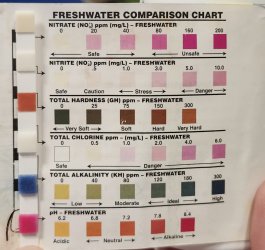 20240618_152922.jpg390.1 KB · Views: 10
20240618_152922.jpg390.1 KB · Views: 10 -
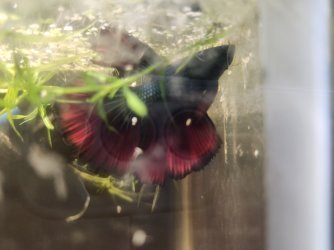 20240618_142513.jpg182.2 KB · Views: 9
20240618_142513.jpg182.2 KB · Views: 9 -
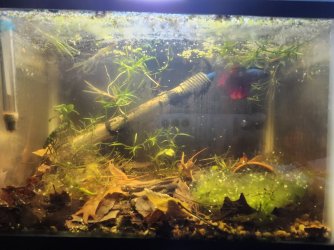 20240618_142455.jpg301.2 KB · Views: 9
20240618_142455.jpg301.2 KB · Views: 9 -
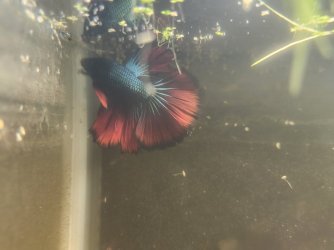 20240618_142316.jpg171.9 KB · Views: 10
20240618_142316.jpg171.9 KB · Views: 10 -
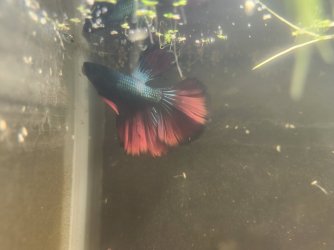 20240618_142313.jpg163.5 KB · Views: 14
20240618_142313.jpg163.5 KB · Views: 14 -
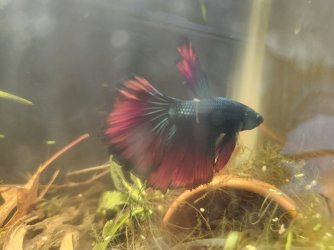 20240618_141926.jpg182.2 KB · Views: 12
20240618_141926.jpg182.2 KB · Views: 12 -
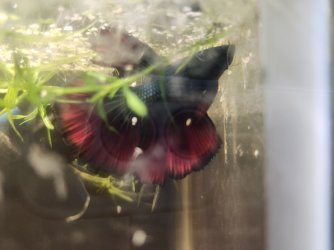 20240618_142513.jpg182.2 KB · Views: 13
20240618_142513.jpg182.2 KB · Views: 13



